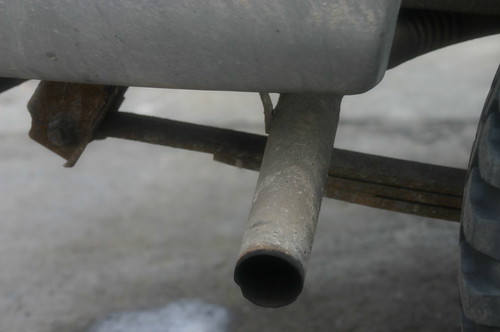Opting to take the train instead of driving for environmental reasons? Think twice about ‘green’ transport, say scientists
(Source: AFP via Yahoo & Science Daily)

Image Courtesy: IOP - Energy consumption and GHG emissions per PKT (The vehicle operation components are shown with gray patterns. Other vehicle components are shown in shades of blue. Infrastructure components are shown in shades of red and orange. The fuel production component is shown in green. All components appear in the order they are shown in the legend.)
Do you worry a lot about the environment and do everything you can to reduce your carbon footprint? Are you the one who frets about tailpipe emissions, greenhouse gases and climate change?
If yes, you must be the one who prefers to take the train or the bus rather than a plane, and avoid using a car whenever you can, faithful to the belief that this inflicts less harm to the planet.
Well, there could be a nasty surprise in store for you, for taking public transport may not be as green as you automatically think, says a new US study published in Environmental Research Letters, a publication of Britain’s Institute of Physics. Often unknown to the public, there are an array of hidden or displaced emissions that ramp up the simple “tailpipe” tally, which is based on how much carbon is spewed out by the fossil fuels used to make a trip. Environmental engineers Mikhail Chester and Arpad Horvath at theUniversity of California at Davis say that when these costs are included, a more complex and challenging picture emerges.
The pair give an example of how the use of oil, gas or coal to generate electricity to power trains can skew the picture.
Boston has a metro system with high energy efficiency. The trouble is, 82 percent of the energy to drive it comes from dirty fossil fuels. By comparison, San Francisco‘s local railway is less energy-efficient than Boston’s. But it turns out to be rather greener, as only 49 percent of the electricity is derived from fossils.
The paper points out that the “tailpipe” quotient does not include emissions that come from building transport infrastructure — railways, airport terminals, roads and so on — nor the emissions that come from maintaining this infrastructure over its operational lifetime.
The researchers also touch on the effect of low passenger occupancy and show that we are naïve to automatically assume one form of transport is more environmentally friendly than another. They conclude from their calculations that a half-full Boston light railway is only as environmentally friendly, per kilometre traveled, as a midsize aircraft at 38 per cent occupancy. From cataloguing the varied environmental costs the researchers come to some surprising conclusions. A comparison between light railways in both Boston and San Franciso show that despite Boston boasting a light railway with low operational energy use, their LRT is a far larger greenhouse gas (GHG) emitter because 82 per cent of the energy generated in Boston is fossil-fuel based, compared to only 49 per cent in San Francisco.
Total life-cycle energy inputs and GHG emissions contribute an additional 155 per cent for rail, 63 per cent for cars and buses, and 32 per cent for air systems over vehicle exhaust pipe operation.
So getting a complete view of the ultimate environmental cost of the type of transport, over its entire lifespan, should help decision-makers to make smarter investments.
For travelling distances up to, say, 1,000 kilometres (600 miles), “we can ask questions as to whether it’s better to invest in a long-distance railway, improving the air corridor or boosting car occupancy,” said Chester. The calculations are based on US technology and lifestyles.
Journal reference:
- Mikhail V Chester and Arpad Horvath. Environmental assessment of passenger transportation should include infrastructure and supply chains. Environmental Research Letters, 2009; 4 (024008) DOI: 10.1088/1748-9326/4/2/024008














